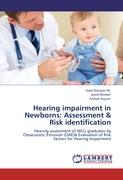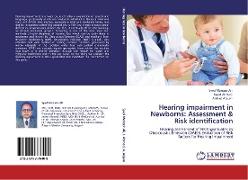- Start
- Hearing impairment in Newborns: Assessment & Risk identification
Hearing impairment in Newborns: Assessment & Risk identification
Angebote / Angebote:
Hearing impairment is a major cause of delay in acquisition of speech and language, particularly at risk are newborns admitted in Neonatal Intensive Care Unit (NICU). Hearing loss, especially in mild and moderate forms, may not be recognized before the second year of life, but it may produce great defects in conversational abilities. Further, it eventually affects the learning, social and emotional growth. Screening is one of the most important methods of early diagnosis of hearing loss which can be easily done in newborns and infants by Otoacoustic Emission (OAE) and Auditory Brain Response Audiomerty (ABR). Otoacoustic emission (OAE) is quick, cost effective and valid method of testing cochlear function, generated by motile elements in the cochlear outer hair cells. Evoked otoacoustic emissions (OAE) are acoustic signals generated from within the cochlea that travel in a reverse direction through the middle ear space and tympanic membrane out to the ear canal. In our study we assessed the hearing impairment in NICU graduates and identified the risk factors for the same.
Folgt in ca. 10 Arbeitstagen

